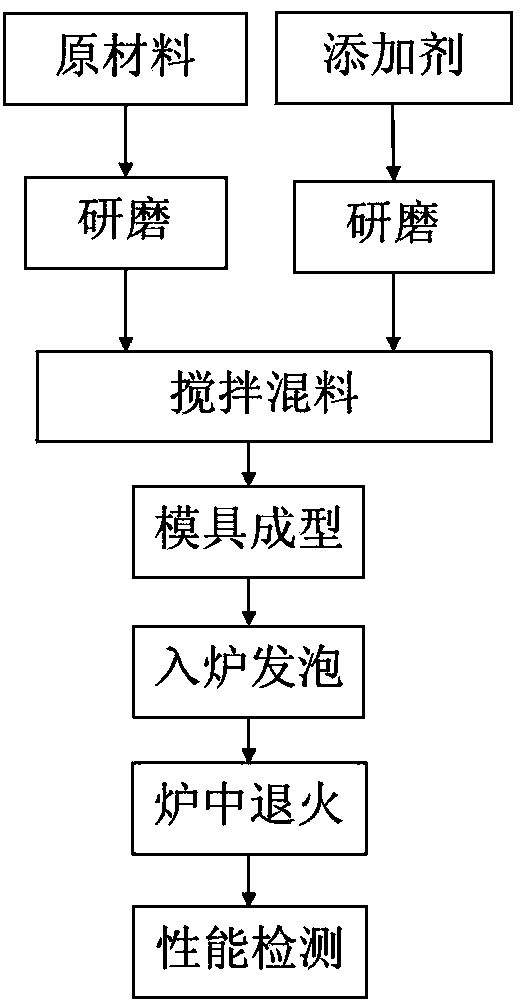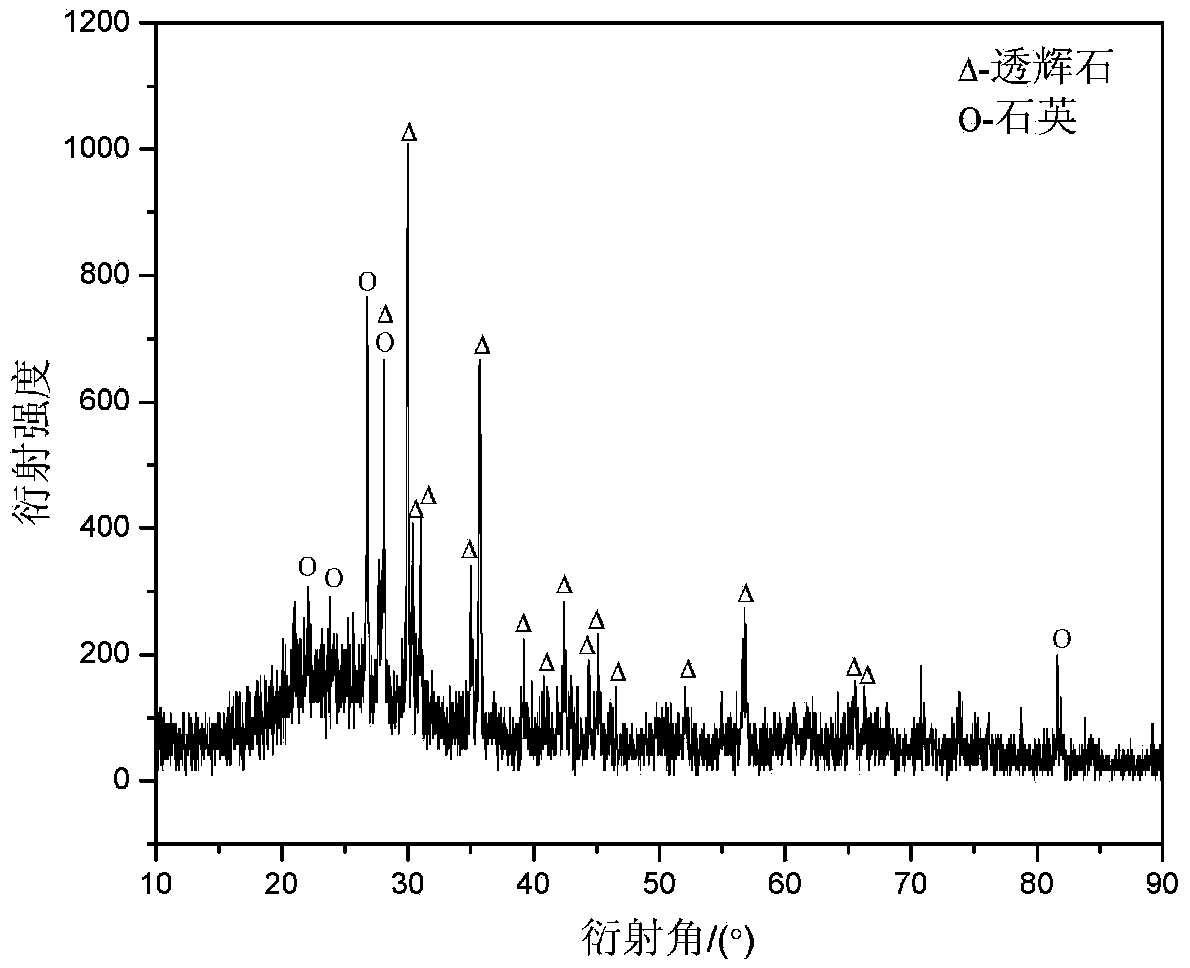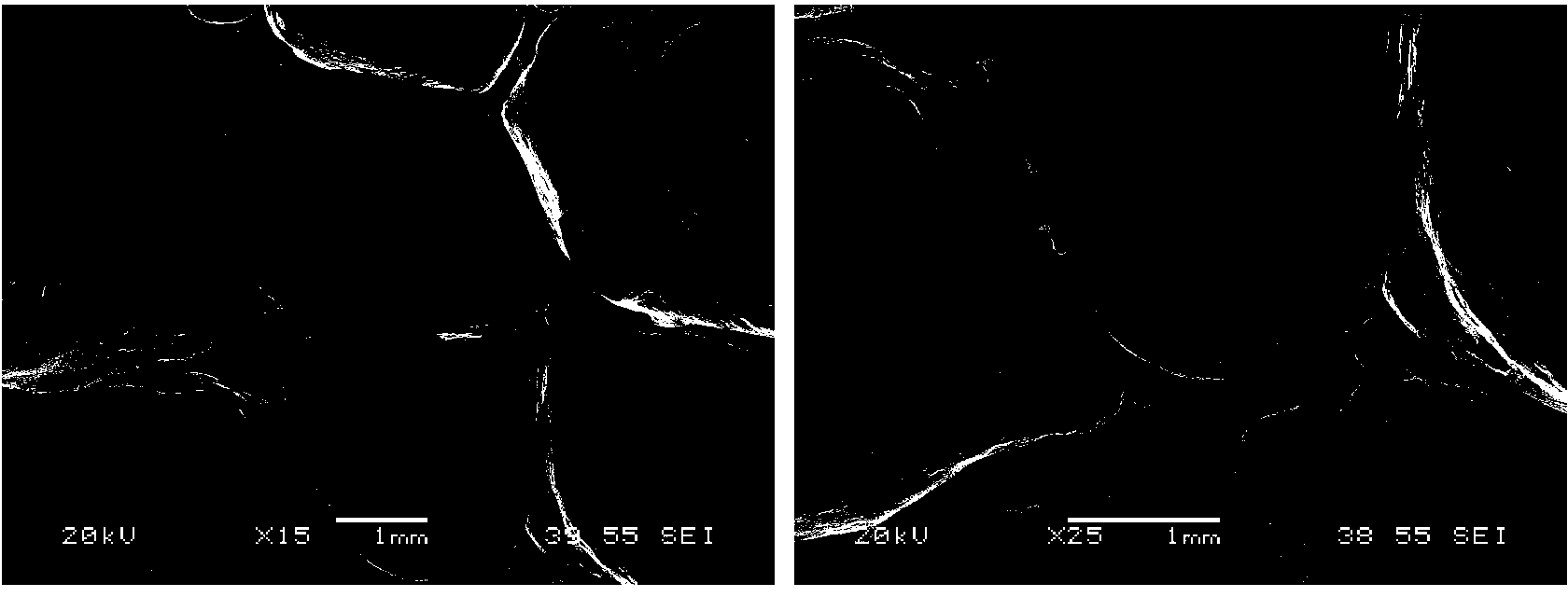A method of producing foam glass by using cold-rolling sludge and waste glass
A foam glass and waste glass technology, which is applied in the field of comprehensive utilization of metallurgical resources and preparation of foam glass materials, can solve the problems of complex operation, high modifier cost, and long process cycle, and achieve simple operation, low cost, and short process cycle Effect
- Summary
- Abstract
- Description
- Claims
- Application Information
AI Technical Summary
Problems solved by technology
Method used
Image
Examples
Embodiment 1
[0030] Example 1: Put the cleaned waste glass, loess, and bluestone in an oven at 110°C to dry, and put the cold-rolled sludge, waste glass, loess, bluestone, and iron red into a ball mill tank to crush and ball-mill them to 100 mesh; Mix 30% of cold rolling sludge, 48.5% of cullet, 18.3% of loess, 2.4% of iron red, and 0.9% of bluestone according to the mass percentage. The total mass of the above batch is 100%, plus 1.5% Mix polystyrene balls and 20% tap water evenly; fill the mixture into a mold and put it directly into a foaming furnace at 1120°C, keep it warm for 10 minutes, and cool it to 500°C at a cooling rate of 5-20°C / min. ~600°C, cool down to below 50°C with the furnace to get foam glass.
[0031] The performance of the foam glass prepared in the present embodiment 1: the bulk density is 0.34g / cm 3 , the volume water absorption rate is 2.72%, the flexural strength is 2.32MPa, and the compressive strength is 2.68MPa.
Embodiment 2
[0032] Example 2: Put the cleaned waste glass, loess, and bluestone in an oven at 110°C to dry, put the cold-rolled sludge, waste glass, loess, bluestone, and iron red into a ball mill tank to crush and ball-mill them to 100 mesh; Mix 35.0% cold rolling sludge, 45.0% broken glass powder, 17.0% loess, 2.2% iron red, and 0.8% bluestone according to the mass percentage. The total mass of the above batch is 100%, plus 1.5% Polystyrene balls, 20% tap water, mix evenly; fill the mixture into the mold and put it directly into a foaming furnace at 1120°C, keep it warm for 15min, and cool it to 500°C at a cooling rate of 5-20°C / min ~600°C, cool down to below 50°C with the furnace to get foam glass.
[0033] The performance of the foam glass prepared in the present embodiment 2: the bulk density is 0.24g / cm 3 , the volume water absorption rate is 0.35%, the flexural strength is 1.07MPa, and the compressive strength is 0.81MPa.
Embodiment 3
[0034] Example 3: Put the cleaned waste glass, loess, and bluestone in an oven at 110°C to dry, and put the cold-rolled sludge, waste glass, loess, bluestone, and iron red into a ball mill pot for crushing and ball milling to 100 mesh; Mix 35.0% cold rolling sludge, 45.0% broken glass powder, 17.0% loess, 2.2% iron red, and 0.8% bluestone according to the mass percentage. The total mass of the above batch is 100%, plus 1.5% Mix polystyrene balls and 20% tap water evenly; fill the mixture into a mold and put it directly into a foaming furnace at 1140°C, keep it warm for 15 minutes, and cool it to 500°C at a cooling rate of 5-20°C / min. ~600°C, cool down to below 50°C with the furnace to get foam glass.
[0035] The performance of the foam glass prepared in the present embodiment 3: the bulk density is 0.18g / cm 3, the volume water absorption rate is 0.89%, the flexural strength is 0.60MPa, and the compressive strength is 0.36MPa.
PUM
| Property | Measurement | Unit |
|---|---|---|
| Bulk density | aaaaa | aaaaa |
| Flexural strength | aaaaa | aaaaa |
| Compressive strength | aaaaa | aaaaa |
Abstract
Description
Claims
Application Information
 Login to view more
Login to view more - R&D Engineer
- R&D Manager
- IP Professional
- Industry Leading Data Capabilities
- Powerful AI technology
- Patent DNA Extraction
Browse by: Latest US Patents, China's latest patents, Technical Efficacy Thesaurus, Application Domain, Technology Topic.
© 2024 PatSnap. All rights reserved.Legal|Privacy policy|Modern Slavery Act Transparency Statement|Sitemap



